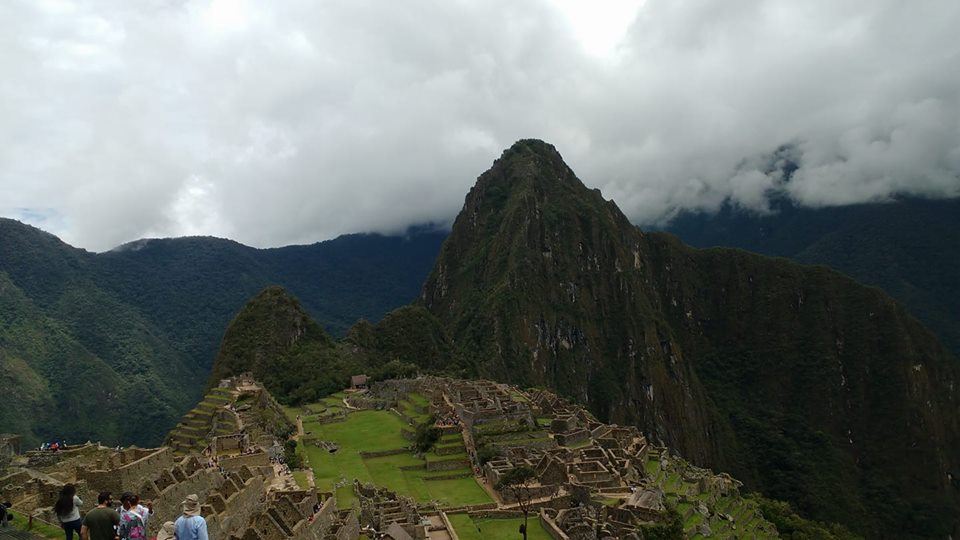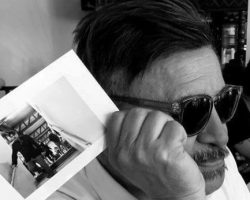Jorge Luis Borges visits Machu Picchu

LIFE. On Sunday, 25 April 1965, Argentine writer Jorge Luis Borges, a 66-year-old, got off a plane at Lima’s international airport. He was accompanied by his student, the educated, young and beautiful María Esther Vázquez, 27. They stayed at Hotel Bolivar, Plaza San Martín, in the historic centre of Lima.
On Monday Borges gave a press conference. He admitted that he knew little about Peruvian literature. In the traditional Café de Los Huérfanos, which still exists and where the speciality is sweet anise bread, Borges had a coffee with numerous writers. Then he visited the ‘Gold of Peru’ exhibition at the Museum of Art on the Paseo Colón.
The following morning Borges spoke at the National University about ‘The Metaphor’, one of his favourite subjects. On Wednesday, 28 April, Borges and María Esther Vásquez travelled by plane to Cusco. In Cusco, he was taken to see the Stone of the Twelve Angles on Calle Hatunrumiyoq. The stone is a cultural heritage of Peru – the base previously held the palace of Inca Roca and now supports the Archbishop’s Palace.
From Cusco, they travelled on the small train to Aguas Calientes and then by bus to the terraces of Machu Picchu. Borges, erect, almost blind but active, swaying like a wild boar and leaning on his bamboo stick, approached the terraces as María Esther was telling him what she saw. They took the classic photo with the citadel behind them.
Jorge Luis Borges was dressed in a khaki suit. María Kodama wore a two-piece suit. At the airport, he was received by a group of students as if he were a Beatle. They settled in Cesar’s hotel in Miraflores. Borges gave numerous interviews at honorary dinners with writers and finally at critical academic events, such as the reception of the Honoris Causa Doctorate from the rector of the Pontifical Catholic University of Peru, José Tola Pasquel.
Maybe at that moment, Borges understood that Machu Picchu had nothing to do with him. Alternatively, perhaps he imagined it as a maze of stones, a large circular space where a lion and his hunter were hopelessly dead. María Esther Vásquez explained later:
‘Borges could be moved by the sound of a verse or the poetic cadence of a phrase, but the feeling of the terraces of the pre-Columbian past, so close to the sky, did not stir his aesthetic passion. I never saw him more politely bored.’
The ruins of Machu Picchu did not dazzle him. On Friday, 30 April 1965, Borges left Peru. He would not remember those five days, but he went back. On 21 November 1978, the Argentine writer landed in Lima again. By now he was 79 years old and accompanied by his friend and personal assistant, María Kodama. She was 41 years old but had the face of a teenager.
Jorge Luis Borges was dressed in a khaki suit. María Kodama wore a two-piece suit. At the airport, he was received by a group of students as if he were a Beatle. They settled in Cesar’s hotel in Miraflores. Borges gave numerous interviews at honorary dinners with writers and finally at critical academic events, such as the reception of the Honoris Causa Doctorate from the rector of the Pontifical Catholic University of Peru, José Tola Pasquel.
On Friday, 24 November, they flew to Cusco. If Borges did not like Machu Picchu, why would he return? Well, he liked paradoxes. In Lima, Peruvian writer and journalist Alfredo Barnechea asked Borges a precise question:
‘Why do you go to Machu Picchu?’
Borges responded politely:
‘There are two reasons. First, I want to see Cusco again, I know how much it impressed me, and I know that now, although I cannot see it, I will believe to see it. And then I want María Kodama to see Machu Picchu.’
Borges arrived in the town of Aguas Calientes affected by altitude sickness, which is not unusual for a 79-year-old man. The lack of air affected him. He got on the bus that climbed the hill to the sanctuary. The entrance to the ruins was full of tourists waiting for their turn to enter Machu Picchu.
In 1946 the first hotel was created there. In the hotel lobby, the pale Borges sat silently and motionless in an armchair, drinking coca tea under the supervision of María Kodama. Borges was not impressed. Back in Cusco, he got excited about the history of an old house, a relic. He visited Casa Cabrera, a pre-Columbian art museum, near the Plaza de Armas. Borges mentioned that Cabrera was one of his ancestors. The Spanish conqueror Jerónimo de Cabrera (1528-1574) had lived in Cusco, and his house is a museum today. Cabrera left Cusco and founded the city of Córdoba in Argentina.
Borges’s genius was a little petulant. In Cusco, Borges’s rancid soul appeared as a ghost, to vindicate supposed old kinships with Jerónimo de Cabrera. This is what Borges said:
‘Jerónimo de Cabrera was one of the thousands of my ancestors. The Peruvians took me to their house in Cusco. It was strange for me to think that from that house, Jerome had left Cusco, never to return.’
On the morning of Sunday, 26 November, he flew to Buenos Aires. In 1986 Borges married María Kodama in Geneva and died two months later.

info@opulens.se



